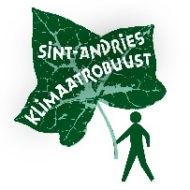Paved squares and streets are magnets for heat, while green shadows ensure that very strong heat stress cannot strike.
Antwerp, 30 September 2019 – Year after year we break heat records. Heat stress is a problem that will become even more important in the future. Our sleep, productivity and health suffer as a result, the mortality increases with every heat wave. In order to determine the extent of the heat stress in the city, residents of Antwerp’s Sint-Andries district have been measuring the temperature at 17 locations in the district at temperatures above 25 degrees Celsius throughout the summer. The results are clear: paved squares and streets are magnets for heat, while green shadows ensure that very strong heat stress cannot strike.
Especially for cities, the increased number of heat days is disastrous. Higher air temperatures are measured in the evening and at night and the radiation levels during the day are noticeably higher. During the measurement campaign in the Sint-Andries district last summer, the wet bulb temperature was measured on those hot days at two times (between 14:00 and 16:00 and after 21:00) by ten residents of the neighbourhood using a VITO measuring device and an app from Akvo (a non-profit internet and software developer). This type of measurement is a good measure of heat stress because it not only takes into account the air temperature, but also the radiation temperature of the sun, the humidity, the shade and the wind. The research also wants to map the impact of shadow (through buildings or trees) and wind. The 17 measuring points were chosen strategically and took into account the variation in direct sunlight/shadow, the subsurface (concrete/grass), the variation in shade (building/small and large trees), the orientation of the streets and the proximity of running water (Scheldt river). The measured wet bulb temperatures were divided into five categories, ranging from ‘<25°C: no heat stress’ to ‘>31°C degrees: extreme heat stress’.
The results
Last summer there was a strong heat stress (>28°C) at all locations. The threshold of extreme heat stress (>31°C) was exceeded on paved squares and streets. At locations with a lot of shade from trees, the threshold for very high heat stress (>29.5°C) was not exceeded anywhere. The highest temperature was measured on the parking lot of the Waalse Kaai (33°C). The coolest location is in the shade of trees at Bergskes Heilig Huisje. Even in the evening, the heat remained on the paved squares. The highest temperature was measured on the Sint-Andries place (27.5°C). Not only grass and large trees make the temperature drop faster in the evening, but also ventilation plays an important role. For example, the temperature at the Scheldt is easily 2°C cooler in a south-westerly wind than in comparable locations without wind coming from over the water.
Conclusions
Everywhere in the district, there is a lot of heat stress, but on hot days we see a lot of local variation. Paved squares cause extreme heat stress and – maybe not so obvious – unpaved grass in the sun is not much cooler. Shadow formation is crucial (trees, buildings). The Scheldt does bring some cooling, if the wind comes from over the water.
What now?
The results are now being presented to the city services of Antwerp, who will include them in the further elaboration of the climate adaption plan.
For your information
The measurement campaign was also carried out indoors at four locations within the Sint-Andries social housing blocks. These results have not yet been processed, although we can already conclude that blinds (shutters or large trees) in apartments make the difference.
This project is part of the GroundTruth2.0 project, financed by the European Commission, to set up citizen observatories on collecting and sharing information on environment-related issues. gt20.eu



